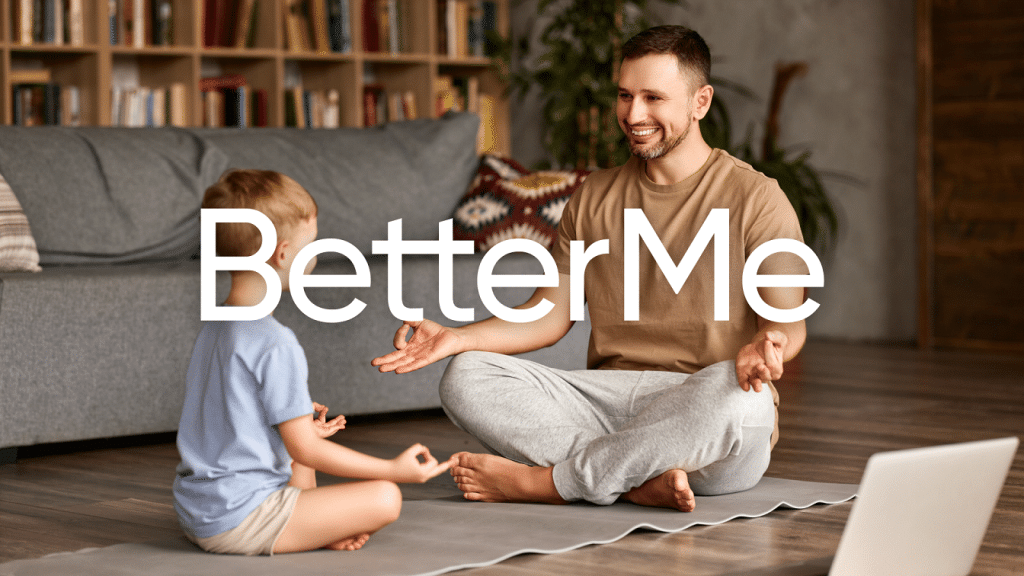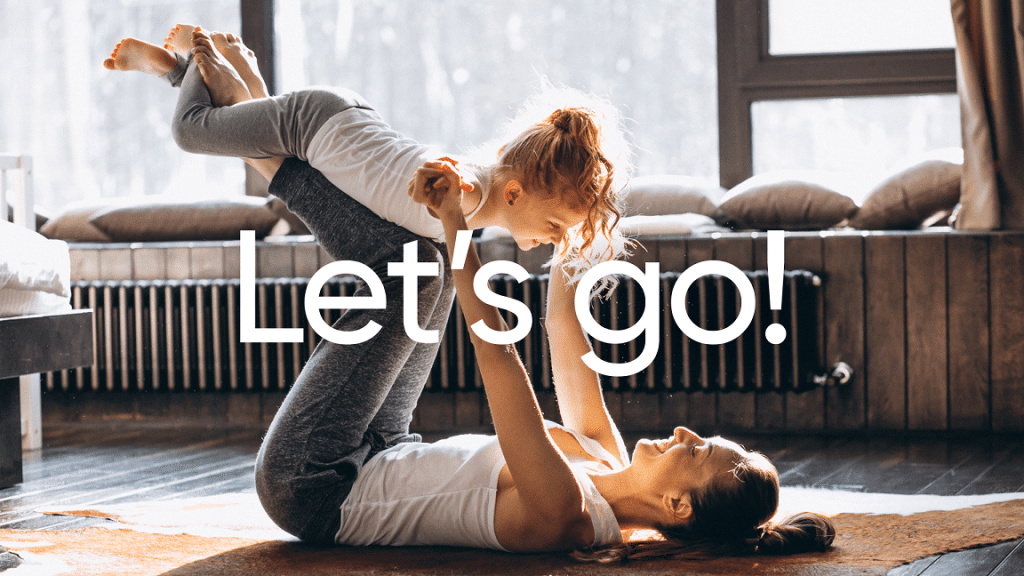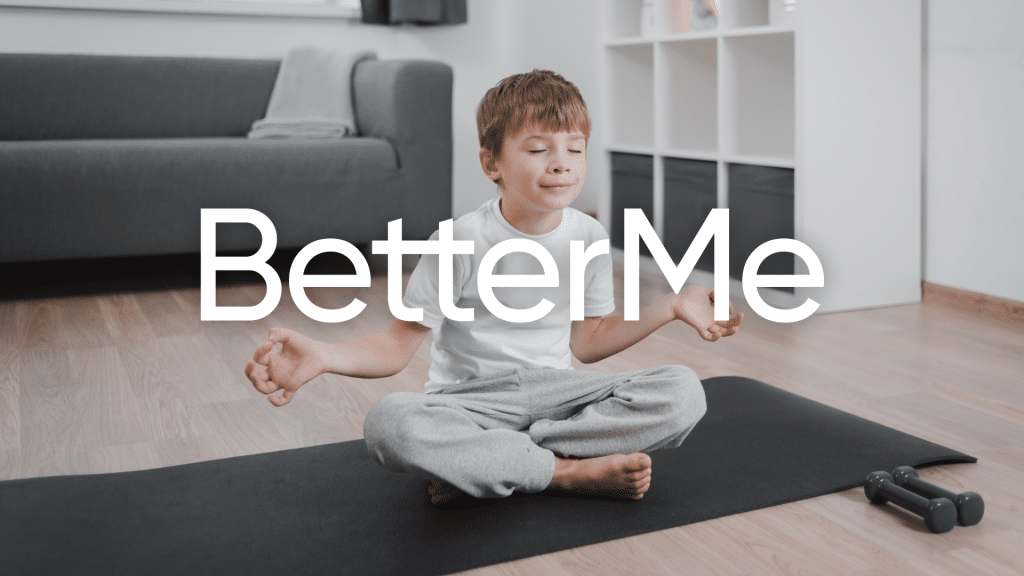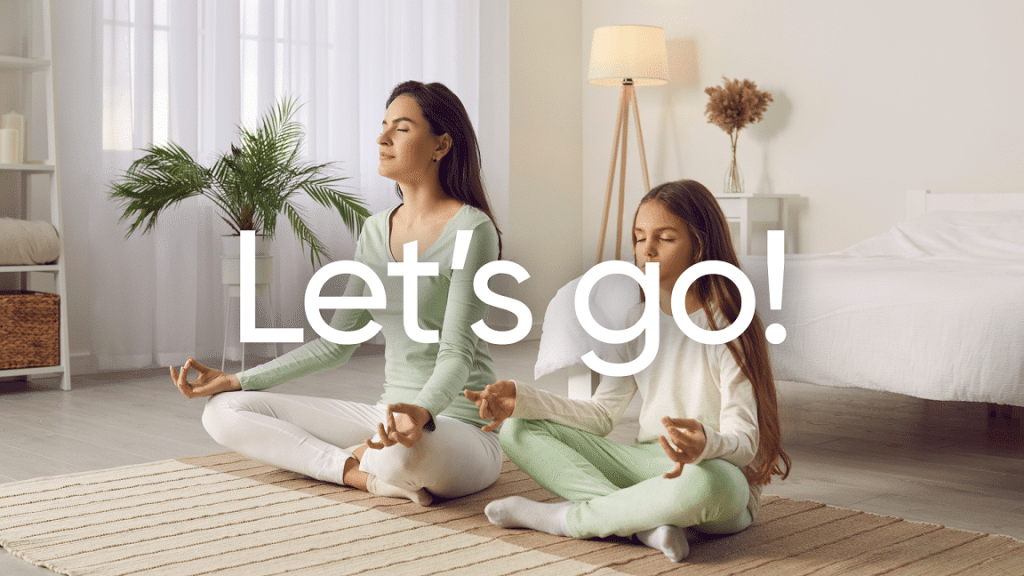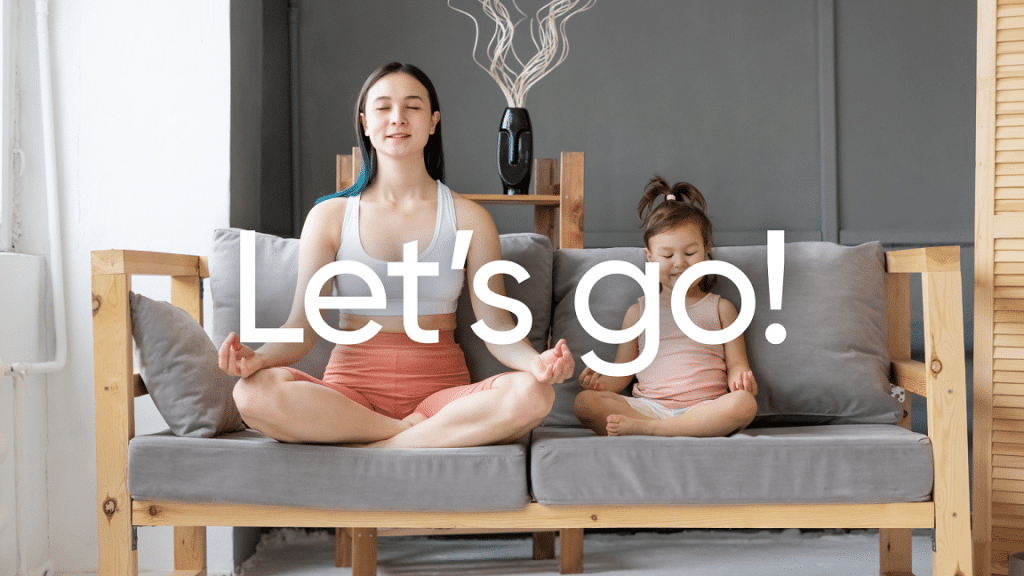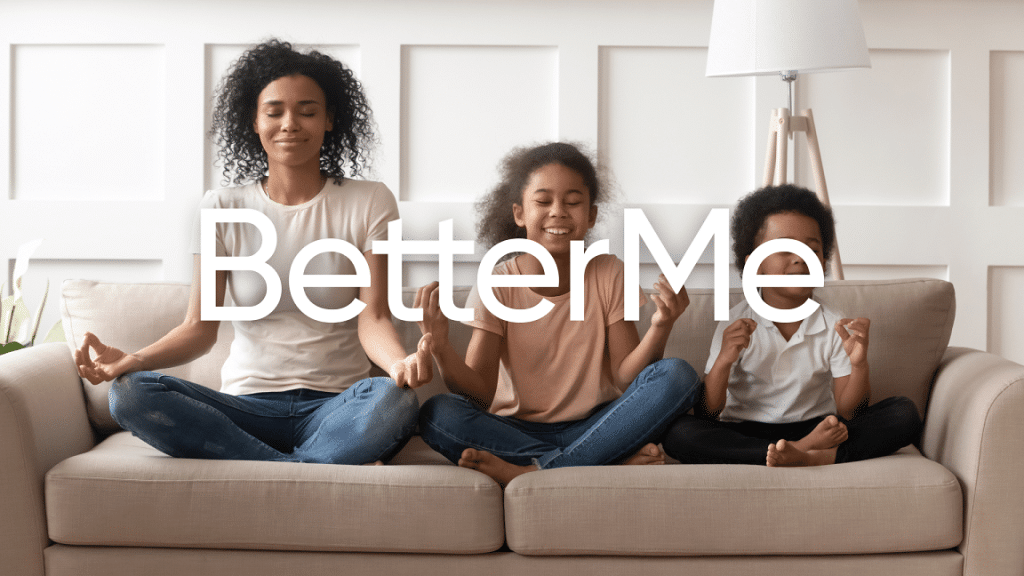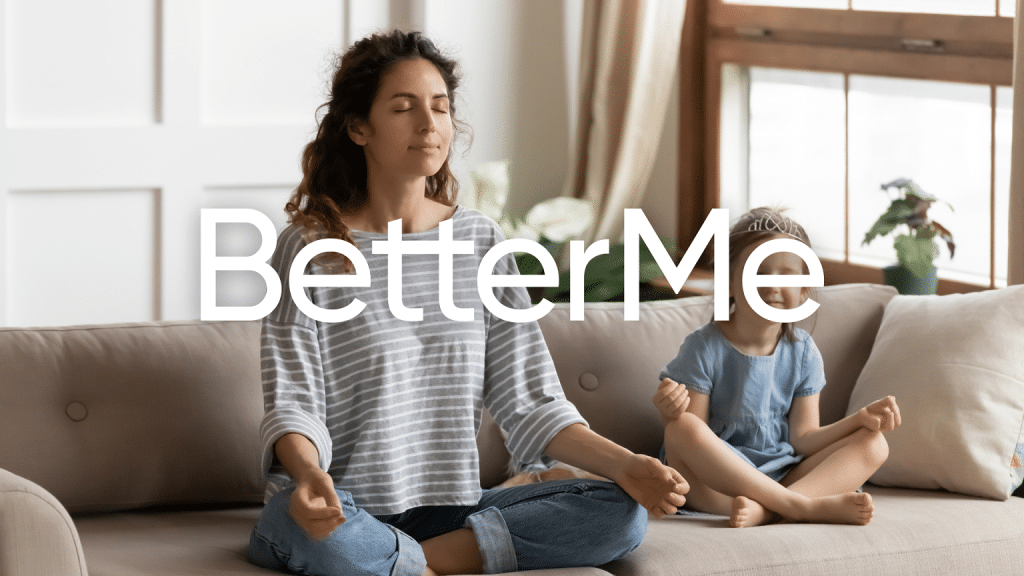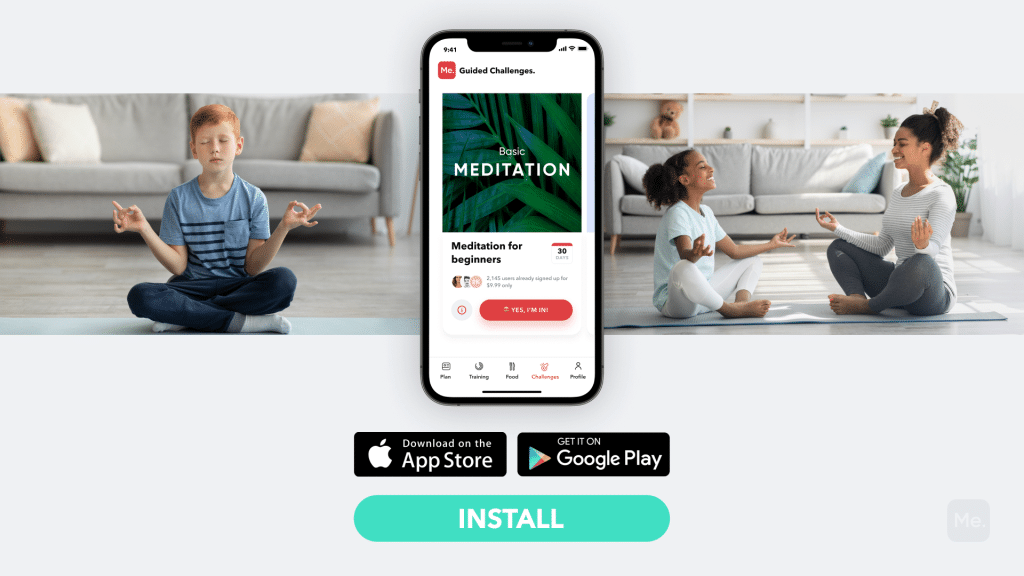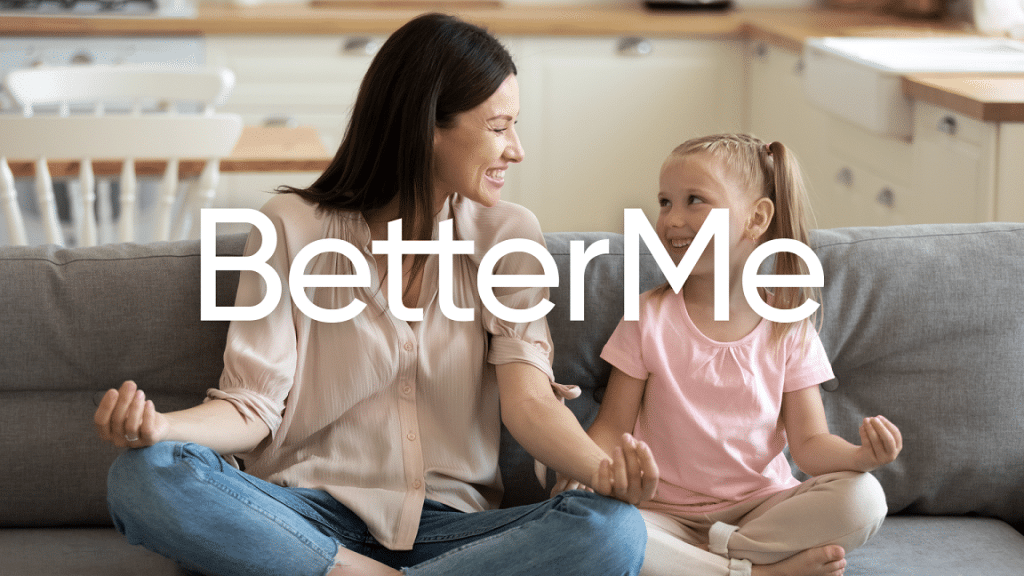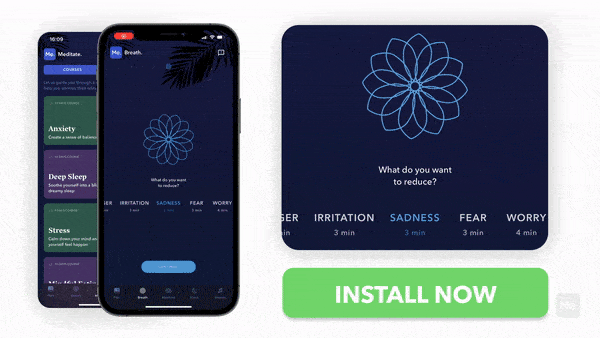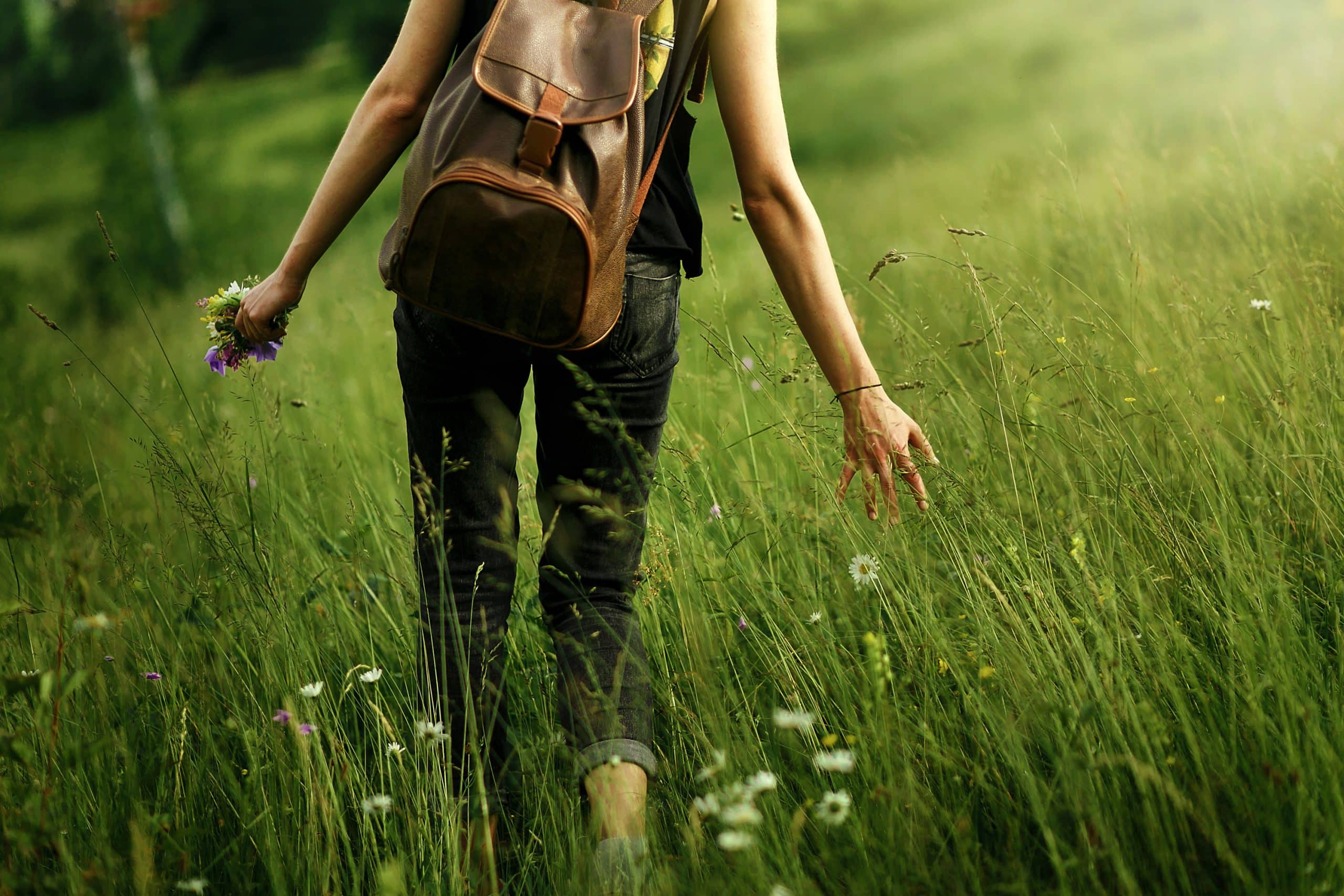Did you know that it is good to encourage and teach your kids to meditate? Like any healthy habit, learning to meditate at an early age is a great habit that can be carried on to other phases of life. When kids learn mindfulness, they build their self-esteem, manage stress better, and can skillfully handle most life challenges.
The new norm is embracing a healthy lifestyle as a family, and meditation is one of the recommended practices. Even with the numerous benefits discussed later in this article, only 4.7% of kids between 4-11 years in the United States meditate, according to the 2017 National Center for Complementary and Integrative Health statistics (8). Therefore, it is crucial to know everything about mindfulness meditation so that you can give your kids this one gift that they can appreciate for the rest of their lives.
Note: Kids of any age can learn mindfulness, which is an essential skill to improve their wellbeing and help them approach stressful situations with openness, presence, and self-compassion. Therefore, parents should teach their kids how to practice mindfulness for the whole family to enjoy the numerous benefits that come with it. So, what is mindfulness meditation for kids? Find out more below.
What Does It Mean To Be Mindful?
To simply put it, mindful meditation means paying attention or concentrating on things that are happening at a particular time, such as hearing or feeling in an accepting, nonjudgmental manner. The New York Times defines it as a simple practice of bringing a gentle, accepting attitude to the current moment (5). It doesn’t mean that you have to clear your mind or reach a specific level of calm; be honest and kindly examine what you are currently experiencing.
Now that you know what mindfulness is, it is time to dig deeper into the topic by explaining how it is performed, some of its basic techniques, useful examples of carrying out the practice, and its benefits.
Read More: Mindfulness Tips: Practical Ways To Improve Your Awareness And Bring Balance To Daily Life
How To Practice Mindfulness: Mindfulness Meditation For Kids
You can introduce mindfulness to children through informal practices that they can emulate. As they get used to that, introduce guided meditation, or teach them how to meditate independently. Note that from the minute one is born, they face adversity in different forms, for instance, hunger, and as they grow up, toddlers may struggle with self-control and language. Other challenges include schoolwork, relationships, and independence, all leading to stress and anxiety. Therefore, it is important to introduce the practice of meditation to children of all ages.
Infant Meditation
At this stage, parents or caregivers should embody mindfulness because these young ones can sense when you are distracted (5). You should, therefore, try to be in the present moment no matter your surrounding by:
- Holding the baby silently and maintaining eye contact with a gentle, loving demeanor. Gazing back at the infant when they gaze at you is a reflective mirroring character, which is a good manner of teaching infancy mindfulness.
- Engaging with the baby, for example, during breastfeeding, put down your mobile phone because it will deviate your attention. You need to fully concentrate on your child.
- Being calm even when infants become upset. Don’t be agitated because doing so may trigger an unhelpful cycle whereby you are both feeding off each other’s unhappiness. Therefore, when frustrated, upset, or out of touch with the present moment, try S.T.O.P. mindful exercise, which stands for (5):
- Stop- Take a momentary pause from whatever you are doing.
- Take a breath- Feel your breathing, which will bring you back to the current moment.
- Observe- Note whatever is happening to you, good or bad, and acknowledge it.
- Proceed- Go on with whatever you were doing after briefly checking in with the present moment.
- Keeping your mind from wandering off between the parenting tasks by either moving and doing yoga when not holding the baby, or try walking meditation, to re-engage with mindfulness.
- Cultivating a sense of gratitude by being always thankful. Perform an exercise that will help you experience a moving sensation and concentrate on the feeling of holding the baby and walking while still being thankful.
Always remember that your baby’s state at a particular moment is not a permanent condition.
Meditation For Toddlers
As early as between 2 and 4 years old, toddlers may begin to understand and experience mindfulness. When in a good mood, mindfulness may help toddlers familiarize more with happiness and gratitude sensations, and when upset, it helps them move on from such experiences by focusing on new, less upsetting feelings like their own breath.
Like infants, you can embody mindfulness to toddlers. This can be done by:
- Minimizing the time spent on the phone when you are with your kids.
- Spending time on activities that promote creativity, inquiry, and concentration like making art, reading, and having conversations, instead of watching TV.
- Treating everyone kindly, particularly your children, even when you are upset or frustrated.
- Being thankful for what you have.
- Performing breathing exercises like S.T.O.P.
Mindfulness For Young Children
Young children should be taught that mindfulness is a tool for various situations, therefore, they should be mindful every day. At this stage, children can practice mindfulness with the guidance of a caregiver or parent and may retain some of the mindfulness meditation skills, which they can turn to by themselves when needed. Do this by:
- Encouraging them to practice the habit of being in the present moment every day for exploring new sensations. Mindfulness should be a daily activity like playing and reading, and not something to turn to when stressed or irritated.
- Using it as equipment for exploring curiosity and kindness by asking them what they feel in their bodies.
- Continuing embodying mindfulness and being comfortable meditating in front of your kids so that they can mimic.
- Teaching them about forgiveness.
Informal Mindfulness Practices For Children
A simple kindness meditation where you offer good wishes and compassion to others may be a good way to begin this practice. According to Mindful.org, one mindfulness practice for families involves (6):
- Finding a comfortable sitting posture, then lowering gaze towards the floor or allowing eyes to close.
- Thinking of someone you look up to and love you back. Notice the feelings that come with thinking about that person.
- Thinking of the things that will make that person happy, then make a kind wish and send it their way.
- It involves thinking of someone you love and are fond of, such as a friend, family member, etc., and bring them to mind and send them a kind wish.
- Thinking of a neutral person that you do not know too well, such as another parent, the mail delivery guy, etc., and after bringing them to mind, make some type of kind wishes towards them.
- Thinking of someone who has frustrated you and wishing them something nice.
- Examining the mind and body after this practice, then allowing the eyes to open and see if there is any change.
If you’ve dipped your toes in meditation before but couldn’t sit through a session because of all the thoughts buzzing in your head, impulses snatching away control or all the overwhelming feelings that start bubbling up the minute you sink into the silence, it’s only because you didn’t have the right guidance. Start using BetterMe: Meditation & Sleep app and watch your life transform!
Guided Mindfulness Meditation For Kids
After making your kid comfortable with the idea of meditation, it is now time to equip them with the necessary materials to refine the practice. Here are some examples of short mindfulness meditation for kids, which you can join to help encourage their concentration (6):
8-Minute Practice To Notice Positive Moments
- Lie down in a comfortable place, with arms and legs falling to the ground.
- Gently close your eyes, then begin to notice the way your body changes with every breath that you take. You may put a hand or stuffed animal on your stomach to feel it move up and down.
- As your belly moves when you breathe, the hand or toy will gently rise or fall. Try to count 10 breaths, one breath being after you breathe in, then out.
- Don’t be worried if you lose count, just continue from the last number that you recall.
- Slowly shift your focus to the day that you had. When you breathe in, concentrate on your breath as your stomach rises, and when you breathe out, the focus should be on something nice that happened or went well during the day.
- Every time you breathe in, notice how your belly moves, and when you breath out, focus on something pleasant during the day.
- Still focusing on belly movement as you breathe in, shift your concentration to something about yourself that you are proud of every time you breathe out. If you cannot find anything to be proud of at that moment, picture something nice that you would wish for yourself.
- Lastly, think of someone who makes you happy every time you breathe out. When you breathe in, the focus should still be on your belly movement.
- To finish, take some deep breaths and begin wiggling your arms and legs, then pause and decide what you would like to do next.
Note that even if there will be scary or bad thoughts, the focus should be on other good feelings. Therefore, it is good to take a few minutes daily to notice things that have gone well during the day.
The Balloon
This is an example of guided meditation, which results in a very simple deep breathing exercise by bringing a visual component (1). You can do it standing or sitting by taking the child through the following steps:
- Relaxing the body, taking deep inhales, and exhaling slowly through the nose.
- Filling up the belly with air by taking a slow, deep breath, as if trying to blow up a big balloon. The belly should be expanded as much as possible.
- Now, through the nose, let the air out of the balloon as they release the breath from the stomach.
- The facilitator may make a hissing sound to encourage the kids to slow down the exhale as if letting air out of the balloon.
- This should be done for several minutes.
Guided Relaxation
Based on the 1920s progressive muscle relaxation technique developed by Dr. Edmund Jacobson, this example of guided meditation may help relieve tension in situations where it is difficult to relax (9). Take the kids through these steps (1):
- Lie or sit down comfortably, then close their eyes.
- As they begin to relax, they should take a few deep cleansing breaths.
- Fully concentrate on the right foot, and notice how it feels. Tense and tightly squeeze the foot by making a fist with the entire right foot and all the five toes.
- Hold the tension for two deep breaths, then suddenly release all of them. Relax completely, as they notice the tension leave, the foot may feel tingly.
- Take a deep breath, then move attention to the left foot, and follow the same instructions as the first one.
- Do the same to different body parts such as the ankles and calves, knees, thighs, legs, arms, hips, chest, lower body, belly, butt, neck, shoulders, etc.
After guiding your young one through the relaxation technique, let them spend a few minutes silently, with their breaths slow and steady.
Read More: Does Meditation Work: Recalibrate Your Mind To Relax And Stop Dwelling On The Negative
Mindfulness Meditation For Kids: Kid-Friendly Mindful Breathing Techniques
These are some breathing practices which you can join. They include:
- Belly breathing- stomach expands as you breathe in and contracts as you breathe out. Do this severally, then go back to breathing as usual.
- Teddy bear breath- different from belly breathing, the kid should lie down with a stuffed animal or teddy on their belly, then watch as it moves up and down as they breathe in and out.
- Four square breathing is preferable for older children. They breathe in for a count of four, then hold the breath for the same count. Repeat this several times, then return to normal breathing.
- Mindful breathing- notice the breath and feel it move in the body. Adding words and visuals may be a good idea to make this more engaging; for example, when breathing in, ask your kid to repeat the mantras of phrases like, I am a lake, and when they breathe out, they may say, I am calm.
- This uses a Hoberman sphere to teach the child fundamental breath awareness. The dome movements of this geodesic dome mimic breathing, i.e., as the dome expands, you imagine the lungs are expanding on the in-breathing. When it folds inwards, you imagine the out-breath contracting. This is how it is done:
- Gently hold the breathing sphere in front of your stomach using both hands, then hold one square on opposite sides of the surface of the ball.
- Deeply breath in, and as the belly expands, allow the sphere to do the same.
- Slowly breath in, momentarily holding at the top of your breath as the ball fully expands.
- Let the ball contract to its smallest size as you breathe out.
- Repeat the above steps.
Mindfulness Meditation For Kids With Anxiety
When a child is overwhelmed with thoughts, they may try a body scan meditation to bring their attention to the present moment. Doing so will enable them to explore the sensations in their body while bringing attention, calmness, and appreciation to the routines of the day or bedtime activities.
Mindfulness Activities For Children
To directly introduce mindfulness to children, use activities that encourage them to tune into their senses. These may include:
- Making a game from eating a snack very slowly, savoring the smell, texture, then taste.
- Involving them in DIY creative activities and mindfulness tools such as glittering different colored beads, lego pieces, etc.
- Using tools such as music, objects, pictures, food, etc. that will help them concentrate while meditating.
- Mindful posing- these should be fun poses that will help them feel happy, strong, and brave such as the Superman pose and Wonder Woman pose. Find out how they feel after posing.
- Super-focused senses- these include the sense of hearing, smelling, seeing, tasting, and touching to encourage children to pause and concentrate on the present.
- Mindful jar- this is to teach kids how strong emotions may take hold and that they can find peace even when these emotions are overwhelming.
- Safari exercise- instead of the adult mindfulness walk, the safari exercise turns an average daily walk into a new exciting adventure whereby they notice creepy-crawlies, birds, bugs, etc.
Some mindful games include blowing bubbles, playing with balloons, pinwheels, blindfolded taste tests, and texture bags.
Simple Appreciation Practice For Kids
A simple appreciation practice for children may be done by asking them if they ever feel disappointed by someone or something and how that makes them feel, letting them acknowledge their feelings, and maybe talking about them. Let them know that even when they are disappointed, there are other good things taking place in their lives. You can also name these three good things by:
- Reminding your kid that the purpose of this game is not to pretend that they are not upset when they feel upset, but rather make them feel grateful for good things even when they are sad, disappointed, or hurt.
- Brainstorming and helping your child discover some three good things if they are having trouble doing so by themselves.
Running a never-ending rat race, shoving trauma further and further away, falling into self-harming thought patterns, living life that’s eclipsed by constant anxiety and fear – this is what an average person goes through every day. Not addressing it will only pull you deeper into a downward spiral. BetterMe: Meditation & Sleep app will help you gain a new perspective on life and help you regain that long-lost internal balance!
Tips On How Parents Can Help Their Kids Mindfully Meditate Successfully
As a parent, you can help your kids mindfully meditate by:
- Engaging in mindfulness yourself so that you can better understand what your child should do and appreciate their capacity to be present in each moment. Also, they will mimic what you do.
- Ensuring the kids are ready to try the practice. It may not be best to force them to meditate when they are anxious to do other activities such as playing.
- Preparing the environment for a successful practice.
- Explaining to older children, in an age-appropriate manner, what is mindfulness, and what it isn’t, giving examples.
- Assuring the young ones that it is okay to lose focus and how they can gently guide themselves back on track.
- Ensuring that they have a positive experience by doing something with them and that they enjoy it until the end of the session.
- Not using mindfulness as a disciplinary tool, always keep the purpose of this practice in mind.
- Involving the kids in the process, for instance, by making them help set up.
- Sharing your experiences of the practice with the children to help them understand better. Also, encourage them to share their experiences.
- Using kid’s mantras for mindfulness meditation. These are phrases that they can repeat when breathing deeply, particularly to calm them down. For example, they can say, I am thankful, by the pond, and let it go.
Benefits Mindfulness Meditation For Kids
Connections in the prefrontal circuits as the brain develops are created quickly during childhood. Thus, because mindfulness enhances skills such as cognitive control and focuses that are controlled in the prefrontal cortex, it may have a specific effect on the development of skills, for example, judgment, self-regulation, and patience in childhood. Other advantages of this healthy practice to kids include:
- Equipping children with what is needed to build confidence, relating to challenging or uncomfortable situations, and coping with stress at an early age gives them the chance to cultivate resilience, developing and refining their mindfulness practice as they grow up.
- It may help children shape executive functions. The three essential skills developed in early childhood are: paying attention and remembering details, shifting back and forth between tasks, and having good manners even when interacting with others. As a result, kids may deal with more advanced tasks such as reasoning, planning, decision-making, problem-solving, and positive social relationships.
- It offers relief from any difficulties in life while giving the beauty of being in the moment.
- Enhanced concentration, classroom participation, attention, self-control, respect for others, and compassion or empathy (7).
- Improvement in academic performance, ability to find solutions to conflicts, and overall health. It is a life skill that may help children cut on bullying and be more aware of who they are. For instance, there was a spike in Mathematics scores for learners who practiced quiet time and mindful meditation, and suspension rates in one rough middle school dropped by 45%, grades improved, and attendance went up when the quiet time was introduced (4).
- Reduced stress, anxiety, depression levels, hyperactive behavior and ADHD symptoms, and disruptive behaviors. It provides kids with stress management strategies to calm them, leading to enhanced mental health and social skills.
It Helps Family Members To:
- Embrace imperfections, better recognize that we do not understand where others are coming from, empathize, and avoid judging others.
- Listen with curiosity, enabling you to engage family experiences with a growth mindset whereby triumphs and struggles are opportunities for learning and growth.
- Communicate honestly and clearly in a courageous way, being open-hearted and open-minded, making everyone comfortable to share their feelings and needs.
- Practice gratitude and appreciation by creating a cooperative and grateful culture at home.
- Learn to easily forgive oneself and others because mindfulness makes you understand that mistakes are not signs of failure but opportunities to learn the ups and downs of life that may interfere in finding the route back.
- Promotes happiness and relieves stress.
Final Thought
Mindfulness is the practice of concentrating in the present state, and just like adults, kids too should benefit from it. Understanding mindfulness meditation for kids will help them manage stressful situations better, among other advantages. Learn or involve an expert in guided mindfulness meditation for kids (facilitator) to lead them through the sessions, or a teacher who will explain everything there is to know about the practice.
DISCLAIMER:
This article is intended for general informational purposes only and does not address individual circumstances. It is not a substitute for professional advice or help and should not be relied on to make decisions of any kind. Any action you take upon the information presented in this article is strictly at your own risk and responsibility!
SOURCES:
- 3 Kid-Friendly Meditations Your Children Will Love (2019, chopra.com)
- 25 Fun Mindfulness Activities for Children and Teens (2020, positivepsychology.com)
- Is mindfulness meditation good for kids? Here’s what the science actually says. (2017, vox.com)
- Meditation transforms roughest San Francisco schools (2014, sfgate.com)
- Mindfulness for Children (n.d., nytimes.com)
- Mindfulness for Kids (n.d., mindful.org)
- Research Round-Up: Mindfulness in Schools (2013, greatergood.berkeley.edu)
- Use of Yoga, Meditation, and Chiropractors Among U.S. Children Aged 4–17 Years (2017, cdc.gov)
- What is Jacobson’s Relaxation Technique? (2020, healthline.com)


